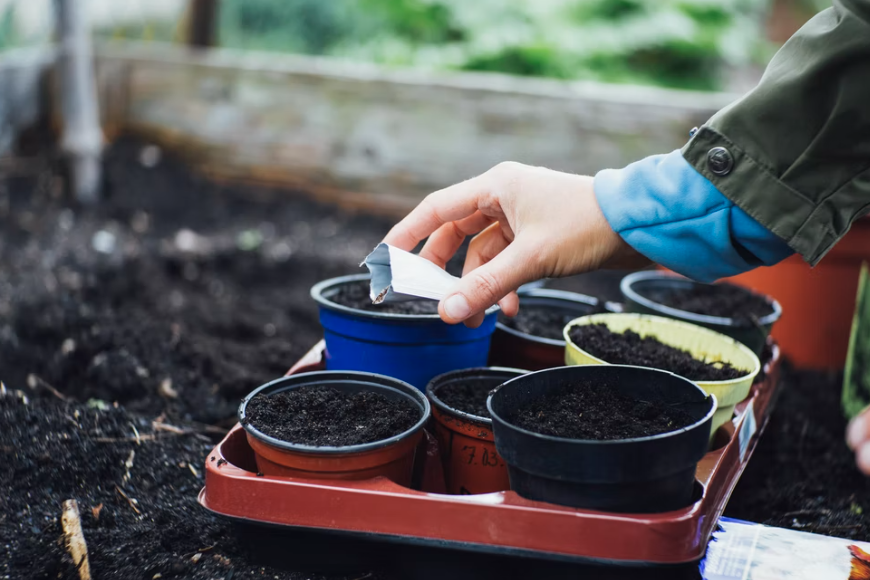
Content Seeding: These 5 Steps Will Get Your Content Growing
Last update: 27 April 2023 at 12:13 pm
Content marketing has now gone mainstream. This means that companies large and small rely on content distribution to increase brand awareness and attract new customers.
But creating successful content also requires an associated content seeding strategy. On this page, we’ll tell you exactly what content seeding is and what you need to keep in mind.
What Is Content Seeding?
The term content seeding comes from the field of content marketing and refers to the targeted distribution of content on the Internet, primarily on social media platforms.

By distributing content via multipliers that fit the topic and content, such as influencers, brand ambassadors, or other high-reach personalities, new target groups can be tapped, and more reach is generated for the content of one’s own brand.
Especially at the beginning of the Internet, it was still easy to achieve a certain visibility on the web and to spread one’s content. But with the mass of content that is published every day in the social media networks alone, the scattering loss of content is extremely high.
Without targeted content seeding measures, the content often doesn’t get the desired reach, which is why you should definitely not put content seeding on the back burner.
When Should You Seek Out Content Seeding?
The goal of content seeding is always to make existing content accessible to an even wider audience and to make content even more visible. That’s why content seeding makes sense in principle for all companies that are trying their hand at content and online marketing.
But especially for young companies and start-ups, building up reach via owned media such as their own social media channels is a welcome opportunity to place their own content more prominently and to build up an initial loyal customer base via measures such as email marketing, a corporate blog or even social media content.
The Advantages and Disadvantages of Content Seeding
As with any marketing activity, there are both advantages and a few disadvantages to content seeding.
Therefore, in order to build a good content strategy and be successful in digital media, you should learn about both sides in advance to make as objective a decision as possible on how to proceed.
The advantages of content seeding
A major advantage of content seeding is that it can definitely be implemented even on a small budget. Of course, you need content to share on social media and on your other channels online, but the placement of the content itself can be successful even with little to no budget.
To do this, it’s usually beneficial to work closely with your PR manager or other team members from marketing, sales, and PR, as you can leverage the various expert networks that exist.

While from a marketing point of view, the generation of reach is the main priority, from a PR point of view, the establishment and expansion of a network of multipliers is another advantage of content seeding, because through the cooperation with, for example, journalists or even certain influencers, a positive image transfer can take place for the brand, which can not only encourage customers to buy but also support the goals of the online PR strategy.
The disadvantages of content seeding
But of course, there are a few downsides to streaming a company’s content. For example, placing content on different channels requires a lot of time – and that doesn’t just apply to the amount of time invested by the team, but also to the length of time it takes for you to see initial success with seeding.
This can take quite some time and depends not only on the reach of the influencers but also on how much your content appeals to your target group.
In addition, content seeding also tries to reach out to your target audience on as many touchpoints and as many channels as possible. This not only costs time, but can also quickly become boring – not to mention annoying – for the target group.
After all, if your customers constantly see the same content on different platforms, this quickly leads to a dulling and a reversal from a desire to buy to an annoyed turning away. The key here is to find a balance so as not to overwhelm the target group.
Target Audience Analysis: What Is It? How to Do It?
Everyone wears shoes, but not everywhere wears heels. If you sell designer pumps, you will want to know how to market to target the people who want your specific shoes. Target audience analysis is how to do that. Your brand’s success relies on marketing efforts that collect demographic and psychographic data of not only your […]
5 Steps to Your Own Content Seeding Strategy
Content seeding is not difficult and holds a lot of potential – as long as you have worked out a functioning strategy as the basis for your marketing. We’ll give you a few tips on how to proceed. Or you can always contact a content marketing agency.
Step 1: Define the content marketing strategy
To create a successful seeding campaign, you should first define your goals. What do you want to achieve with your campaign? This can be building a larger social media reach, but also generating more traffic and backlinks for your website or blog, as well as creating more trust in your brand through successful influencer marketing on your social media channels.

In the next step, you should make a precise definition of the target group as well as a selection of media and channels through which you want to address this target group.
You also need to determine a budget that you are willing to invest in for building traffic for your website or blog, or that you want to spend on content creation or cooperation with an influencer.
Finally, a detailed time and resource plan is also part of the strategy. This will help you identify more quickly whether you may need assistance in creating and publishing the content on your social media platform, website or blog, or perhaps you should even use external agencies to research suitable influencers and target groups.
Step 2: Create the content
After successfully determining the channels to distribute the content and the target groups to reach, it’s time to move on to the heart of your content campaign: creating the content. AI tools like ChatGPT can be of great help here. If you are wondering how to use ChatGPT, you just have to enter the topic and the AI will generate the content for you.
The media you create depends heavily on your choice of channels: On social media platforms such as Instagram and TikTok, short-lived video content is particularly successful, whereas your website is more likely to attract more traffic through longer texts that are optimized for search engines.
Content should also play a role in your choice of media because depending on what content you want to place, you should choose a correspondingly appropriate medium for it. For example, complex issues are best explained in a short video or in an audio format such as a podcast, whereas numbers and statistics can be made easier to understand via an infographic.
Step 3: Identify influencers and multipliers
The next step is to research suitable multipliers and influencers. Here it depends on which content creators you identify with and whether an influencer can also represent your company’s offering with their content.
It is best to use existing networks to build relationships with the influencers or to become aware of new influencers.
At the same time, you should work here together with your PR team on an appealing text with which you establish contact with the distributors. Whether you go directly via social media accounts or research the e-mail address of the desired multiplier is up to you.
Step 4: Content distribution
Now it’s time to contact your chosen influencers and distribute the content yourself on your owned media channels.
Here, you should consider in advance which content pieces you will publish when and on which channel. Placing them all at once can quickly overwhelm users and shorten the duration of the campaign. Leaving too much time between campaign pieces, however, can cause the target audience to lose interest and the campaign’s reach to suffer.
In parallel to publishing the content, you should also already be thinking about how best to record and check the distribution and performance of the individual pieces of content in this step. This is extremely important for the final step of performance analysis and optimization.
Step 5: Performance analysis and optimization
Once the content is published and distributed, you should regularly check how each piece of content is performing. Which piece has performed the most across which networks and where have goals perhaps not yet been met?

This information is not only important for the continuous optimization of your campaigns but is also extremely valuable for the future planning of further seeding campaigns.
Conclusion: More Reach With Content Seeding
Content marketing has become an integral part of many companies’ communications mix. But as the old content seeding rule says: content is only as good as your seeding strategy 😉 .
That’s why you should not only focus on creating engaging content but pay at least as much attention to the distribution of that content. This is the only way to get the most out of your content strategy.







